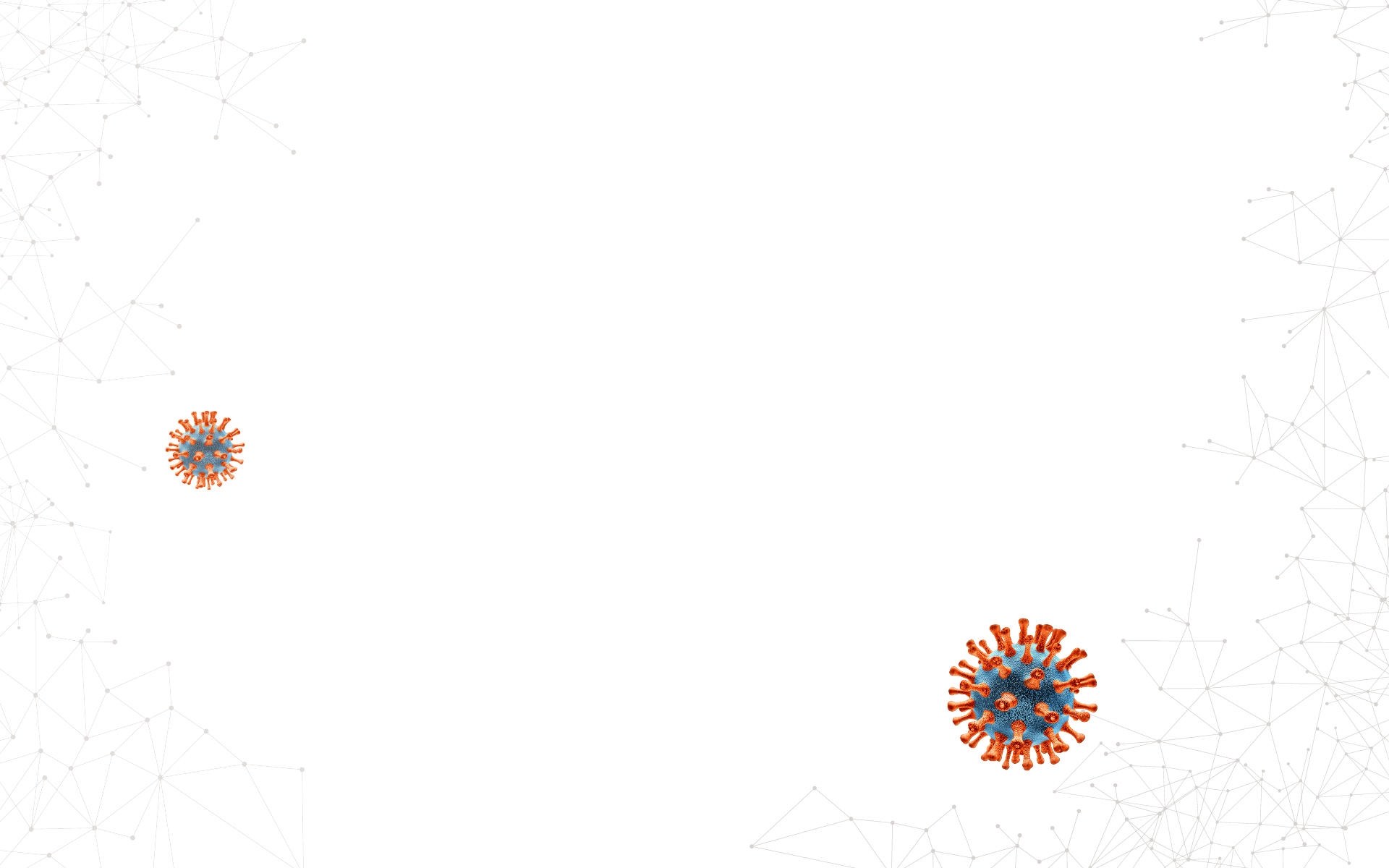
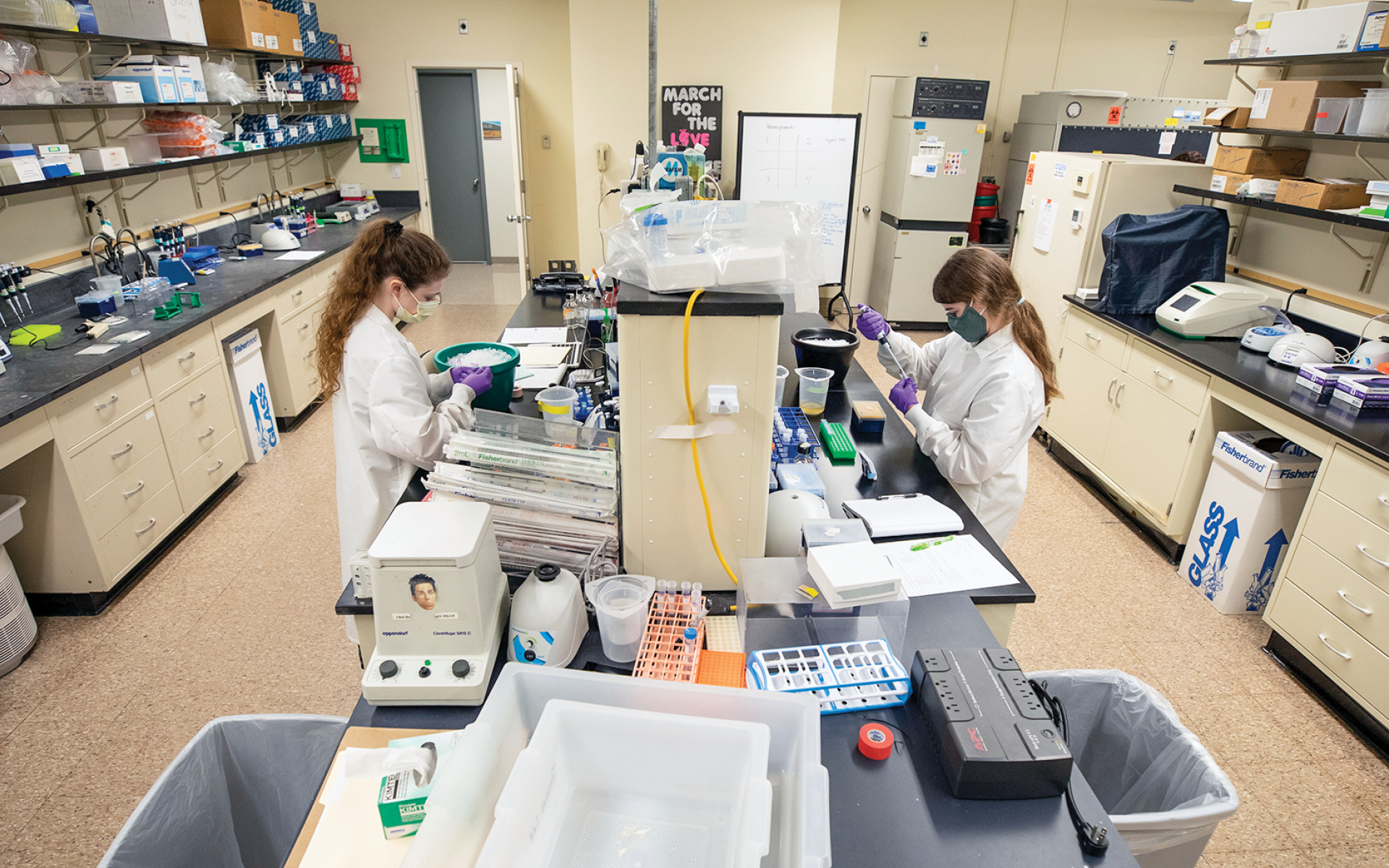
Early in 2020, as the magnitude of the COVID-19 outbreak started to set in, William Wasilenko, PhD, Vice Dean for Research, began consulting with EVMS administrators, government agencies and research leaders at medical schools across the country. In early March, EVMS started to steadily reduce the amount of on-site research and the number of personnel conducting research.
A month later, the “ramp down” was in full swing. Basic scientists shut down all but essential lab activities. Clinical researchers halted most patient trials. Those involved in community-based research and student learners paused their activities. Only research deemed critical was allowed to proceed under tight safety guidelines.
“We wanted to reduce the number of essential personnel in the facility, helping to ensure that we had a safe working environment for our researchers,” Dr. Wasilenko says. The process accommodated researchers who needed to be on-site to finish up experiments — some the effort of months of work — and to maintain vital research equipment.
By June, the school was emerging from the slowdown and carefully restarting activities.
“In general, [the slowdown] went very smoothly,” Dr. Wasilenko says, “and it didn’t have any lingering, long-lasting effects on most research programs.”
One example: Frank Counselman, MD (MD ’83, Emergency Medicine Residency ‘86), Professor and Chair of Emergency Medicine, stopped his department’s clinical research in early March and temporarily limited its work to chart reviews and similar activities that do not involve patient contact.
“Since we assume every patient in the emergency department (ED) could have COVID-19 — regardless of their reason for presenting to the ED — we did not want to risk the health of our research nurses and coordinators,” he says, “or accidently expose a patient to an asymptomatic, infected researcher.”
Some challenges mean slowing down or starting over
Unfortunately, the school didn’t escape unscathed.
Richard Britten, PhD, Professor of Radiation Oncology and Biophysics, suffered a significant impact to his NASA-funded work. His research focuses on identifying ways to protect astronauts from long-term exposure to space radiation.
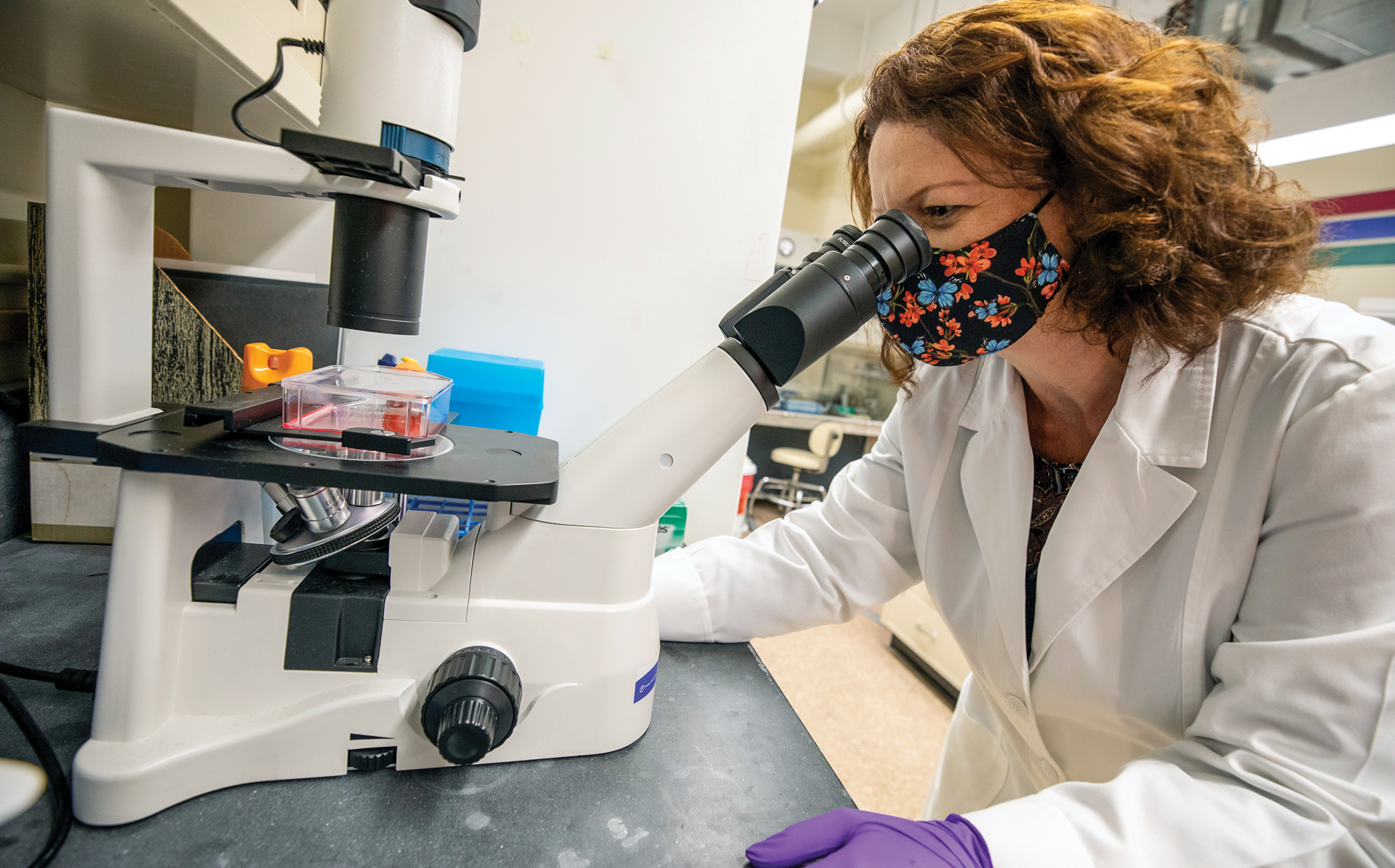
EVMS classified Dr. Britten’s research as essential, so he was able to continue his work when the pandemic began. But in April, NASA closed its Space Radiation Laboratory at Brookhaven National Laboratory in Upton, New York, where Dr. Britten conducted important aspects of his research.
Without access to that lab, Dr. Britten was forced to halt his work and release three EVMS lab assistants.
“Since [their positions] are grant funded, and it is illegal to use federal funds for them to work on other projects,” he says, “I had to lay them off.”
The research — part of a long-term project started in June 2019 — was “decimated.” He estimates the loss at $200,000.
“I have lost a year’s work and have to start over again,” Dr. Britten says. “I will rebuild. It’s just going to be hard.”
Another basic scientist, Diane Duffy, PhD, Professor of Physiological Sciences, lost two months of work researching ovulation. Though she is back in the lab now, work has slowed.
“Social distancing restricts the number of people we can have in the lab at any given time,” Dr. Duffy says. “This slows progress on experiments since we have to take turns working in the space.”
She also has found it difficult to find needed supplies and “reagents,” chemicals commonly used in scientific experiments. “Experiments can be held up for weeks because we need an item that is slow to arrive or on long-term back order.”
Some changes offer silver linings
On the bright side, Dr. Duffy says, is the research community’s newfound reliance on videoconferencing.
“Everyone is meeting virtually,” she says. “I see distant colleagues more often because we can hold impromptu meetings using videoconferencing software. Major in-person meetings were cancelled and were replaced with smaller, more flexible virtual meetings. I hope the scientific community will continue to interact like this beyond COVID-19.”
Among student researchers, the biggest impact was felt in the “summer scholars” student-research program.
Social distancing restricts the number of people we can have in the lab at any given time. This slows progress on experiments since we have to take turns working in the space.
Diane Duffy, PhD
“We initially tried to conduct it in a remote fashion,” Dr. Wasilenko says, “but as the virus outbreak escalated and the general restrictions in various educational programs expanded, we had to cancel the traditional program.”
EVMS was able to salvage some aspects of the program. The school created an alternative research experience for medical students who often count on the research experience to help them vie for competitive residency slots.
One EVMS researcher found opportunity in the pandemic.
Sunita Dodani, MD, PhD, Founding Director of the EVMS-Sentara Healthcare Analytics and Delivery Science Institute (HADSI), is leading a multi-institution effort to establish a nationwide COVID-19 registry focused on health disparities
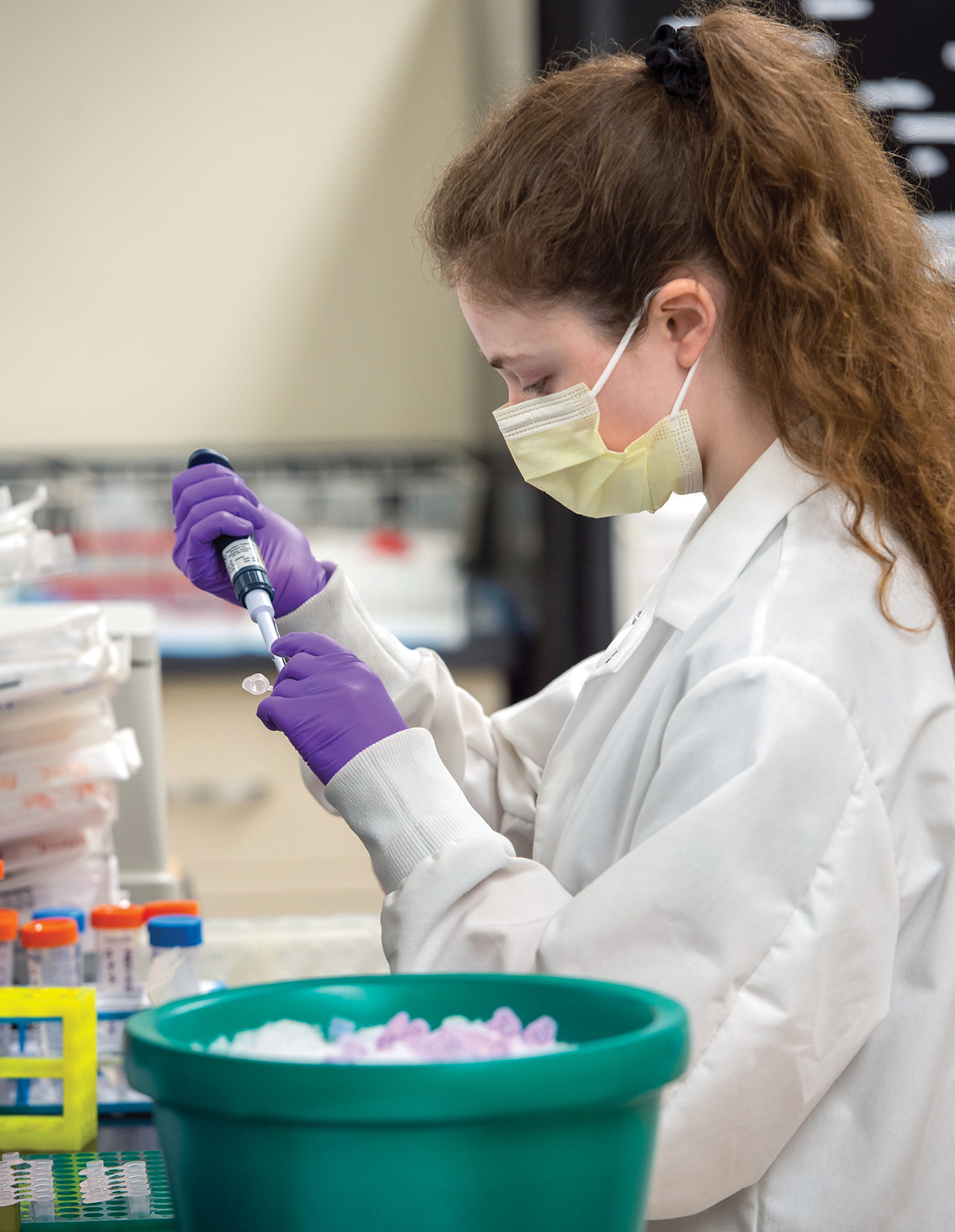
“The registry will provide state-level data to identify economic, racial and ethnic inequities associated with COVID-19,” Dr. Dodani says. “This comprehensive, longitudinal data — including race, ethnicity, socioeconomic, occupational and geographic factors — will be vital to teach us more about where the greatest risks of this pandemic lie and to guide policy solutions that can address disparities.”
Throughout the pandemic, Dr. Wasilenko says he witnessed a “wonderful example” of people from all corners of the institution working together toward a common goal.
“This really was a team effort,” he says. “There was tremendous cooperation to first ramp down and then to begin to ramp up research here at EVMS. That involved not just researchers and their staff but a range of supporting departments. They all had key roles, and I’m very thankful to all of them for their help.”
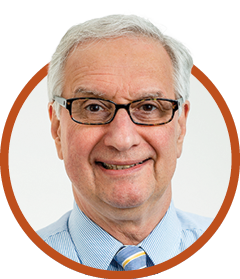
WILLIAM WASILENKO, PhD
Dr. Wasilenko is Vice Dean of Research and Associate Professor of Microbiology and Molecular Cell Biology.
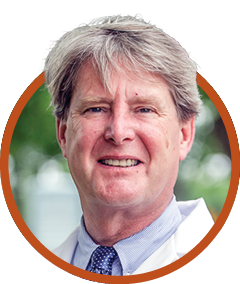
FRANK COUNSELMAN, MD (MD ’83, EMERGENCY MEDICINE RESIDENCY ’86)
Dr. Counselman is the Chidester Endowed Chair of Emergency Medicine and Professor and Chair of Emergency Medicine.
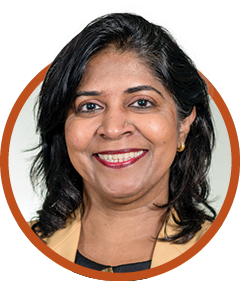
SUNITA DODANI, MD, PhD
Dr. Dodani is the Founding Director of the EVMS-Sentara Healthcare Analytics and Delivery Science Institute and Professor of Internal Medicine.
Also in this issue
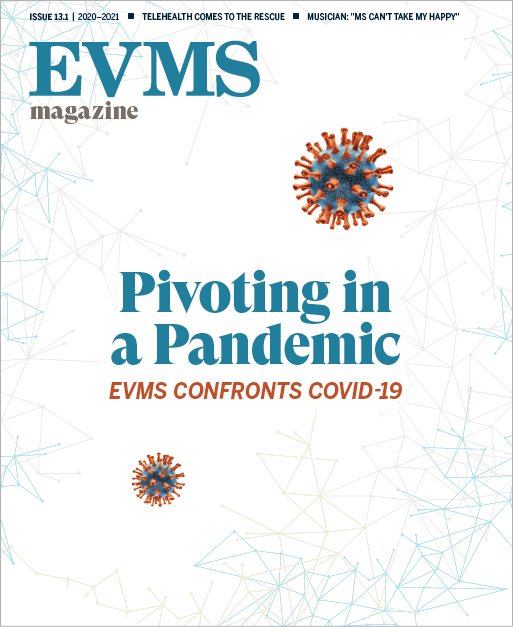
Never Miss a Story
The award-winning EVMS Magazine is published four times a year. Subscribe to be notified when the next digital issue is published and/or to receive complimentary copies of the print version.
Subscribe Download a PDF










